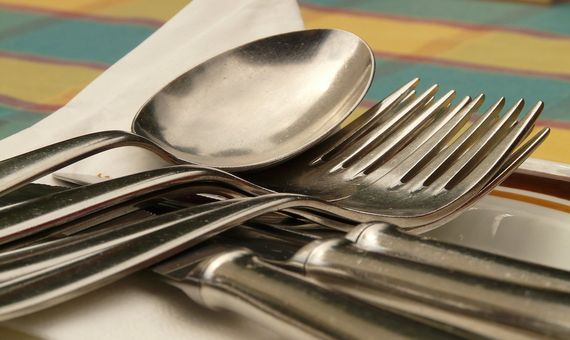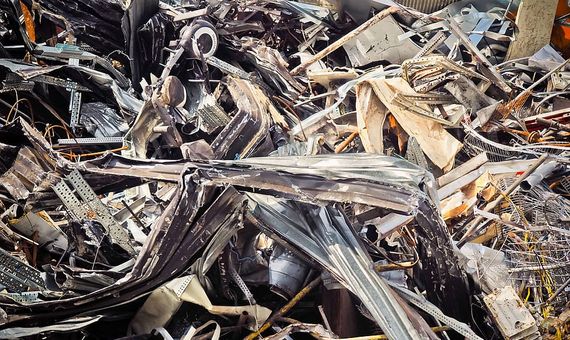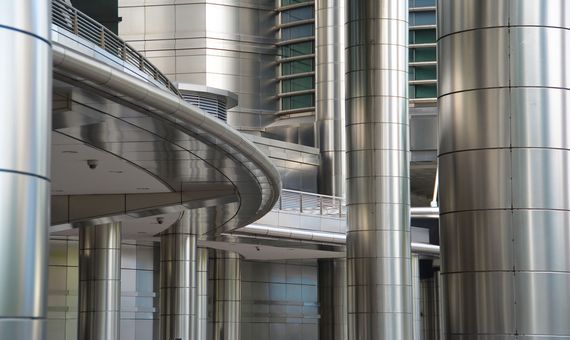On 13 August 1913—or 20 August, according to other sources—the English metallurgist Harry Brearley took his first stainless steel ingot out of his electric furnace in Sheffield, a chance discovery that was originally intended for a different use from those we know today, but which soon revolutionised the cutlery and kitchenware industry, as well as finding its way into many other sectors. In today’s world, with issues of sustainability paramount, stainless steel is prized for its durability and recyclability. Although researchers and industry continue to explore improvements and new composites, stainless steel’s reputation as one of the most sustainable materials remains as untarnishable as the metal itself.

The goal of Brearley (18 February 1871 – 14 July 1948) was far from making cutlery that would not rust. As research director of Brown Firth Research Laboratories, a laboratory set up by two Sheffield steelworks, his task was to find a material for rifle barrels that would resist erosion caused by the heat of gunfire, the main cause of deterioration of such components. Knowing the high melting point of chromium, Brearley mixed it with steel (itself an alloy of iron and carbon). When he treated these samples with acid to study their structure under the microscope, following the usual technique, he observed that this steel was remarkably resistant to chemical attack. Years later, Brearley recounted that he noticed that cut samples of the steel left in the laboratory did not rust, despite being exposed to water and air.
From scepticism to star material
As is the case with almost every technological breakthrough, to credit Brearley alone would be to pay a disservice to the many other pioneers who contributed incremental steps towards the new discovery. From the early 19th century, various scientists had observed that chromium prevented rust in steel, and before the middle of that century, some researchers and companies were already making chromium steel. In fact, when Brearley wanted to patent his invention in the USA, he discovered that a patent already existed there in the name of Elwood Haynes; the two men joined forces to create the American Stainless Steel Corporation. There is even evidence of the manufacture of steel and chromium alloy weapons in the 11th century at Chahak in ancient Persia (modern Iran).
Before Brearley, however, the use of this corrosion-resistant steel had been restricted to weaponry and some structures. The Briton’s achievement was to complete the R&D chain directly; when he found that his steel was also resistant to acidic foods such as vinegar and lemon, and with Sheffield being the centre of the cutlery manufacturing industry in England, its application to this use was an immediate consequence. And as is also often the case in the history of invention, not everyone welcomed the innovation: one manufacturer said that cutlery that did not rust “would be counter to nature,” and even Brearley’s own bosses scorned the idea. In fact, rust free cutlery did run counter to the nature of the business, as only the wealthy could afford silverware, and the normal steel cutlery used until then by ordinary people had to be replaced from time to time due to rust and corrosion.

Over the years, with improvements in quality, mass production and lower costs, stainless steel became the metal of choice for kitchenware and other tools, but it also found countless applications in industry, construction, transport and other sectors. In 1930, it was used for the first time in a skyscraper, in the crown cladding of the Chrysler Building in New York. In general, stainless steel, of which there are different types, contains at least 11% chromium, often also combined with nickel or other metals or additives. Chromium acts as a barrier to prevent the oxidation of iron in contact with air.
Recycling and low waste are the keys to its sustainability
In addition to its intrinsic qualities, stainless steel stands out for its harmlessness to human health and its sustainability. Its life-cycle cost is low, as there are savings thanks to its durability and low maintenance. It is also 100% recyclable, indefinitely and without loss of quality, so its raw materials are reused over and over again. At least 85% of all stainless steel is recycled at the end of its useful life to produce more steel or as a source of iron, making it the most recycled industrial material in the world, ahead of paper or glass. 60% of all new stainless steel is made from recycled material and if the figure is not higher, it is because there is not enough scrap available to meet the increasing demand.
In order to further improve the sustainability of stainless steel, the industry is working to reduce the environmental footprint of its production by reducing the use of water (for example, by recycling and reusing up to 98%), increasing energy efficiency (in the last 35 years, energy consumption to produce stainless steel has been reduced by more than 50% per tonne manufactured), using more fossil fuel-free green energy, and improving and facilitating recycling under the industry’s goal of achieving zero waste. However, another advantage of this material is that, given its inert nature, the part that is not recycled does not release any contaminants that are harmful to the environment.

Emissions could be considered its weak point—the iron and steel industry generates 6.7% of global anthropogenic CO2, and this gas accounts for 93% of all greenhouse gas emissions in the sector. According to industry data, every tonne of steel produced emits between 1.8 and 2.91 tonnes of CO2, when the raw materials, manufacturing processes and energy used are included. While improvements such as those mentioned above do lower the carbon footprint, there is an intrinsic limitation on reducing the CO2 generated by the chemical interaction between raw iron ore and metallurgical coal.
Several projects currently underway aim to cut these emissions, mainly by carbon capture of the CO2 generated to replace part of the coal used in the alloy, thereby achieving ultra-low carbon dioxide steel (ULCO). These projects are still in experimental and demonstration phases, but industry sources say they could potentially reduce emissions by more than 50% in the future.
An irreplaceable material
Another constraint is the availability of the raw materials required to meet rising global demand. A recent study conducted by researchers at the University of Iceland estimated that the shortage of nickel may make this metal the limiting factor, and that because of this “there is a significant risk that stainless steel production will reach its maximum capacity around 2055 and slowly decline after that,” without the production of other metals such as cobalt, molybdenum, tantalum or vanadium being able to provide a substitute in sufficient quantities. However, according to the authors, “at recycling rates above 80%, the supply of nickel, chromium and manganese will be sufficient for several centuries.”
Finally, one drawback of stainless steel for certain applications is its high weight, which limits its use in aircraft or automobiles; the latter have seen a reduction in their steel content as more fuel-efficient vehicles are designed. To make steel lighter, alloys of steel with aluminium have traditionally been used, but the resulting material is more brittle. New alloys are now being tested to lighten the weight of steel without compromising its properties. Iron and aluminium are also being used in research into new intermetallic materials—combinations beyond the solubility limits of the alloy—to emulate the properties of stainless steel with less weight and eliminating the dependence on chromium and nickel.

Ultimately, experts agree that today it is difficult to find a substitute material for stainless steel in terms of its properties and sustainability. Steel is certified as a sustainable building material by the International Green Construction Code or the U.S. Green Building Council, and there is increasing expert interest in stainless steel as “the choice for ecosustainability”. With the recent rise of other building materials being presented as sustainable alternatives, such as bamboo, cork, recycled plastic or new CO2-capturing cement formulations, steel also offers a versatility that many of them lack.
Stainless steel also rivals bamboo as the most sustainable material for kitchen and household utensils. In different applications, carbon steel—with a higher carbon content than standard steel—offers a cheaper alternative, aluminium a lighter one and titanium a more biocompatible one; but all of them sacrifice some of the characteristics that make stainless steel almost irreplaceable, and virtually eternal—if we don’t have a steel-recycling bin near our home, it’s because we can pass on our cutlery to our great-grandchildren.
Comments on this publication